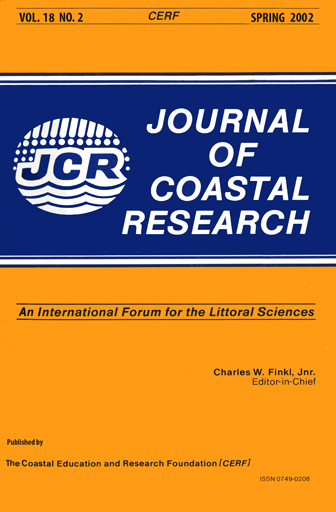The High Water Line as Shoreline Indicator
Keywords:
Shoreline indicators, high water line, beach erosion rates, Assateague Island, MD, Duck, NC, shoreline changeAbstract
Beach erosion rates are often determined by delineating historical shoreline positions from maps and aerial photographs and more recently global positioning systems (GPS). The high water line is usually selected as the shoreline indicator for mapping purposes; it is defined as the wet ted bound and by "markings left on the beach by the last high tide." The high water line that is acquired from field determination or photogrammetric means is assumed to represent the mean shoreline position for that year, but field studies have shown that its position is variable because of changes in water level due to waves, wind, tides, and other factors. This study investigated the short-term variability in the high water line location over tidal cycles, days, and months through field observations and interpretation of videotape data. Studies, undertaken at Assateague Island National Seashore in Maryland and at the Field Research Facility at Duck, North Carolina, indicated that the high water line is a useful shoreline indicator within certain limits. GPS acquired shorelines based on actual identification of the high water line in the field are deemed more accurate than photo-interpreted shorelines for coastal erosion mapping and management.


